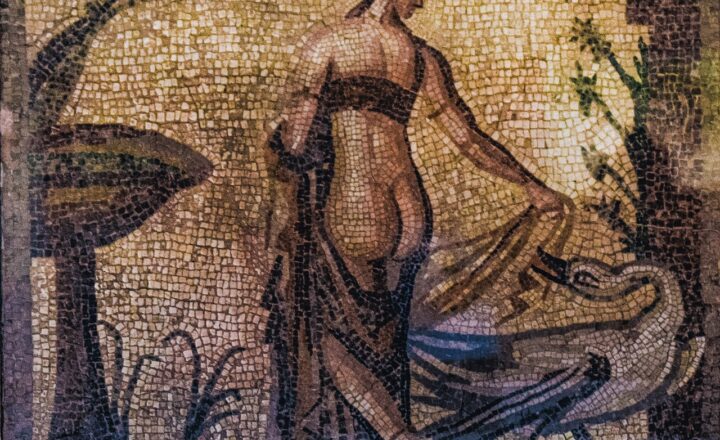
Artifacts tell stories about our history, our cultures, and even the bizarre twists of fate that have led them to be discovered. From lost civilizations to everyday objects, some artifacts are found in the most unexpected locations, sparking curiosity and intrigue. In this article, we will explore some of the strangest artifacts ever found in unlikely places, examining their significance and the tales they tell.
1. The Nazca Lines: Giant Geoglyphs in the Desert
The Nazca Lines are among the most mysterious artifacts found in the arid landscape of southern Peru. Carved into the earth, these massive geoglyphs depict various animals and shapes, including birds, monkeys, and even human figures. The sheer scale of the designs can only be fully appreciated from the air, leading many to speculate about their purpose.
Some theories suggest they were astronomical calendars, while others postulate they had religious significance. Discovered in the 1920s, these lines could not have been visible to those who created them, thus raising questions about the motivations behind their construction.
Yet, as tourists flock to witness these ancient wonders, the mystery surrounding their creation deepens. How did the Nazca people achieve such immense precision centuries ago? As scientists continue to study these geoglyphs, they reveal new secrets about the ancient civilization that once thrived in the region.
2. The Lascaux Caves: Prehistoric Art Underground
Discovered in 1940 in southwestern France, the Lascaux Caves contain some of the earliest known examples of human art. Dated to around 17,000 years ago, the caves hold over 600 paintings of animals, including horses, bison, and stags, all created using natural pigments. The detailed imagery suggests a complex understanding of the animals and their habitats.
The discovery was serendipitous; a group of teenagers stumbled upon the cave while exploring the surrounding area. The find not only captivated the world but also provided insight into the lives of prehistoric humans and their relationship with nature. Despite being a significant archaeological site, the caves have faced challenges, including preservation issues due to human activities.
The Lascaux Caves serve as a reminder of the artistic abilities of our ancestors and their enduring connection to the land around them.
3. The Antikythera Mechanism: An Ancient Greek Computer
In 1901, a group of divers stumbled upon a shipwreck off the coast of the Greek island Antikythera, revealing a collection of ancient artifacts. Among them was the Antikythera Mechanism, a complex device that has been recognized as one of the earliest known analog computers. Dating back to around 150-100 BC, this remarkable artifact was designed to predict astronomical positions and eclipses.
The device features intricate gears and inscriptions that reflect the advanced scientific understanding of the ancient Greeks. Its discovery changed the perception of ancient technology, revealing that sophisticated mechanical devices were utilized long before the Renaissance.
Today, the Antikythera Mechanism remains a symbol of the ingenuity of ancient civilizations, proving that history often holds treasures in the most unexpected places.
4. The Terracotta Army: A Hidden Army Beneath the Earth
Accidentally unearthed by farmers in 1974 near Xi’an, China, the Terracotta Army comprises thousands of life-sized clay soldiers, horses, and chariots buried with the first Emperor of China, Qin Shi Huang. This incredible archaeological find includes over 8,000 figures, each uniquely detailed to represent the emperor’s army.
The underground burial site, believed to protect the emperor in the afterlife, provides invaluable insights into ancient Chinese military practices and artistry. The remarkable preservation of the bronze weapons and intricate craftsmanship of the figures highlight the sophistication of the Qin Dynasty.
This monumental discovery serves as a testament to the craftsmanship and beliefs of ancient China and the potential hidden wonders lying beneath our feet.
5. The Rosetta Stone: The Key to Understanding Egyptian Hieroglyphs
Discovered in 1799 by French soldiers in a small town near the Nile Delta, the Rosetta Stone was instrumental in deciphering Egyptian hieroglyphs. This granite slab features inscriptions in three languages: Greek, Demotic, and hieroglyphs, allowing scholars to unlock the secrets of ancient Egyptian writing.
The Rosetta Stone is believed to have been created in 196 BC and served as a decree honoring King Ptolemy V. Its accidental discovery during a military expedition opened doors to the study of Egypt’s complex history, culture, and language.
Today, the Rosetta Stone resides in the British Museum and continues to symbolize the pursuit of knowledge and the interconnectedness of history.
6. The Iceman: A Mummified Body from the Past
In 1991, hikers stumbled upon the well-preserved remains of a man in the Alps, later named Ötzi the Iceman. Dating back to around 3300 BC, Ötzi was remarkably well-preserved due to the cold climate, providing us a glimpse into the lives of our prehistoric ancestors.
The discovery revealed incredible details about his diet, clothing, tools, and even possible cause of death. Ötzi’s body has taught researchers about the Copper Age, human migration, and ancient survival techniques.
Moreover, the ongoing research on Ötzi sheds light on prehistoric medicine and culture, elevating him to icon status in the world of archaeology. The Iceman’s accidental discovery highlights how nature can preserve history in extraordinary ways.
Conclusion
The strange artifacts found in unlikely places remind us that history is often hidden, waiting to be discovered in the most unexpected circumstances. Each artifact tells a story, bridging the gap between our past and present while offering insights into diverse civilizations and their cultures. Whether hidden beneath the earth, submerged underwater, or concealed in caverns, forgotten relics continue to challenge and expand our understanding of human existence.
As we explore these remarkable discoveries, we celebrate the curiosity and ingenuity that drive us to uncover the mysteries of our world. With each find, we unveil a piece of history, confirming that sometimes the most incredible stories lie just beneath our feet, waiting for someone to come along and unearth them.








